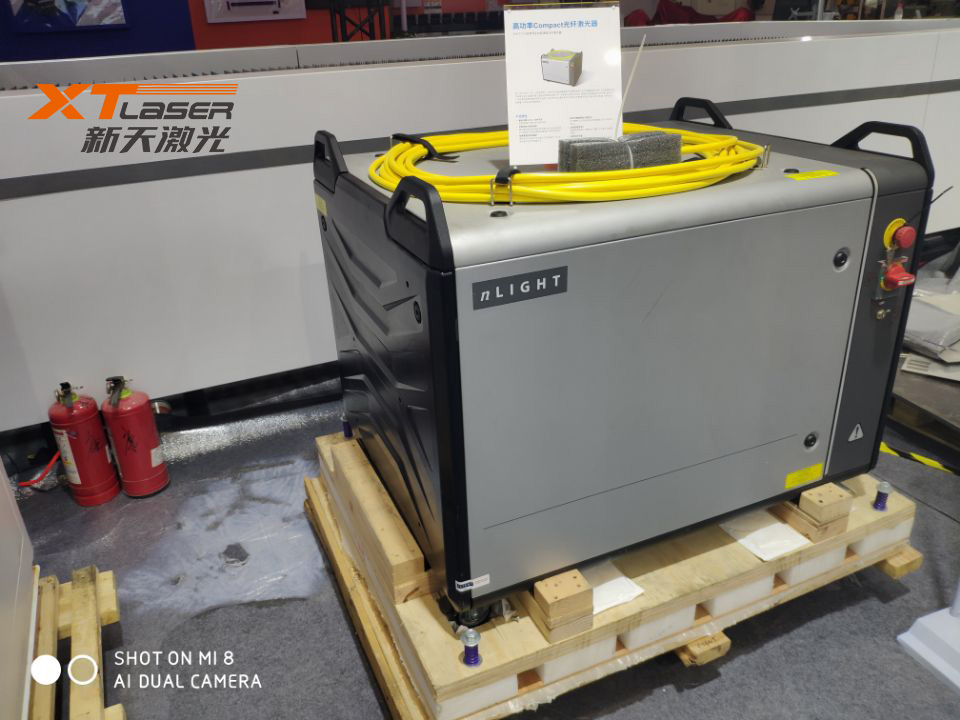Which materials do laser cutting machines cut well
XT Laser – Laser Cutting Machine
When cutting metal materials with a laser cutting machine, the cutting effect and speed vary depending on the material. Some materials are not suitable for processing with a laser cutting machine. In the application of laser cutting machines, carbon steel and stainless steel are the most ideal cutting materials. “Materials, regardless of cutting speed or cutting effect, can achieve an ideal state. What other materials can laser cutting machines cut besides carbon steel and stainless steel?”

Structural steel.
This material works better when cutting with oxygen. Use a continuous mode laser. When machining very small curves, the control system changes the feed speed by adjusting the laser power. When using oxygen as a processing gas, the cutting edge can be slightly oxidized. For plates up to 4 mm thick, nitrogen can be used as the processing gas for high-pressure cutting. In this case, the cutting edge will not be oxidized. Complex contours and small holes (diameters smaller than the material thickness) should be cut in pulse mode. This avoids cutting off sharp corners.
The higher the carbon content, the easier it is for the cutting edge to harden, and the more likely it is to burn corners.
Plates with high alloy content are more difficult to cut than plates with low alloy content. Oxidized or sandblasted surfaces can degrade cutting quality.
The residual heat on the plate surface has a negative impact on the cutting effect. For plates with a thickness exceeding 10 mm, better results can be obtained by using a special laser plate and applying oil to the surface of the workpiece during processing. The oil film reduces scum adhesion to the surface, greatly facilitating cutting. The oil film does not affect the effect of the cutting action. To eliminate tension, only the steel plate that has undergone secondary treatment is cut. Impurities in molten steel under boiling conditions can actually have a significant impact on the cutting effect. In order to cut structural steel with a clean surface, the following tips must be followed:.
Silicon ≤ 0.04% is the first choice, suitable for laser processing. Silicon<0.25% can be slightly reduced in some cases. Si<0.25% is not suitable for laser cutting, and may give worse or inconsistent results. Note: For St52 steel, the allowable amount according to DIN standards is Si ≤ 0.55%. This indicator is too inaccurate for laser processing. Cutting stainless steel requires the use of oxygen, and it doesn’t matter if the edges are oxidized.
Nitrogen is used to obtain edges that are free of oxidation and burrs without further treatment.
Due to the possible high laser power and the use of high-pressure nitrogen, the cutting speed may be equivalent to or higher than oxygen. In order to cut stainless steel over 4mm with nitrogen without generating burrs, it is necessary to adjust the focus position. By resetting the focus position and reducing the speed, a clean cut can be obtained, although small burrs are of course unavoidable.
Coating a layer of oil film on the surface of the plate can achieve better perforation results without reducing the processing quality. For stainless steel, please choose oxygen cutting: for thick plates above 5mm, please reduce the feed speed and use pulse laser mode. For piercing and cutting, using aluminum and aluminum alloy nozzles with the same height is more suitable for cutting in continuous mode. Although aluminum has high reflectivity and thermal conductivity, depending on the alloy type and laser power, aluminum can be cut to a thickness of 6 mm and can be cut using oxygen or high-pressure nitrogen.
When cutting with oxygen, the cutting surface is rough and hard. Only a small amount of flame is generated, but it is difficult to eliminate when using nitrogen, and the cutting surface is smooth. When machining plates below 3mm, after optimization and adjustment, almost burr-free cutting can be achieved. For thicker plates, there may be burrs that are difficult to remove. Pure aluminum has a high purity and is difficult to cut.
The higher the alloy content, the easier the material is to cut.
Recommendation: You can only cut aluminum if you have installed a “reflector absorber” on your system. Otherwise, reflection can damage the optical elements. Titanium plates are cut using argon and nitrogen as process gases. For other parameters, refer to nickel chromium steel.
Copper and brass.
Recommendation: You can only cut aluminum if you have installed a “reflector absorber” on your system. Otherwise, reflection can damage the optical element.
Titanium alloy.
Cutting titanium plates using argon and nitrogen as process gases. For other parameters, refer to nickel chromium steel, red copper, and brass, both of which have high reflectivity and excellent thermal conductivity. Brass with a thickness of less than 1mm can be cut using nitrogen.
Copper with a thickness of less than 2mm can be cut, and the processing gas must be oxygen. Recommendation: Only when a “reflective absorption” device is installed on the system can copper and brass be cut. Otherwise, reflection can damage the optical element.

